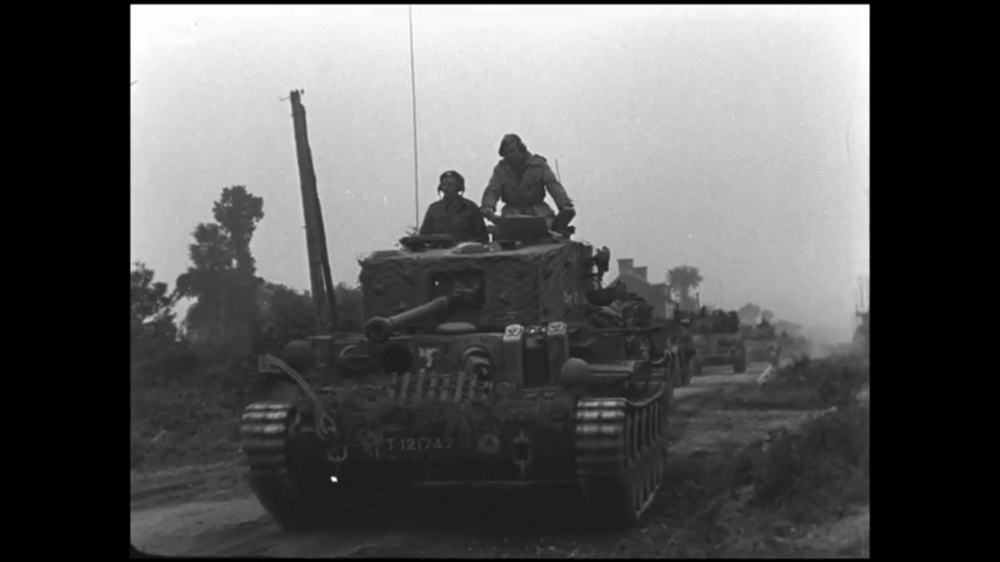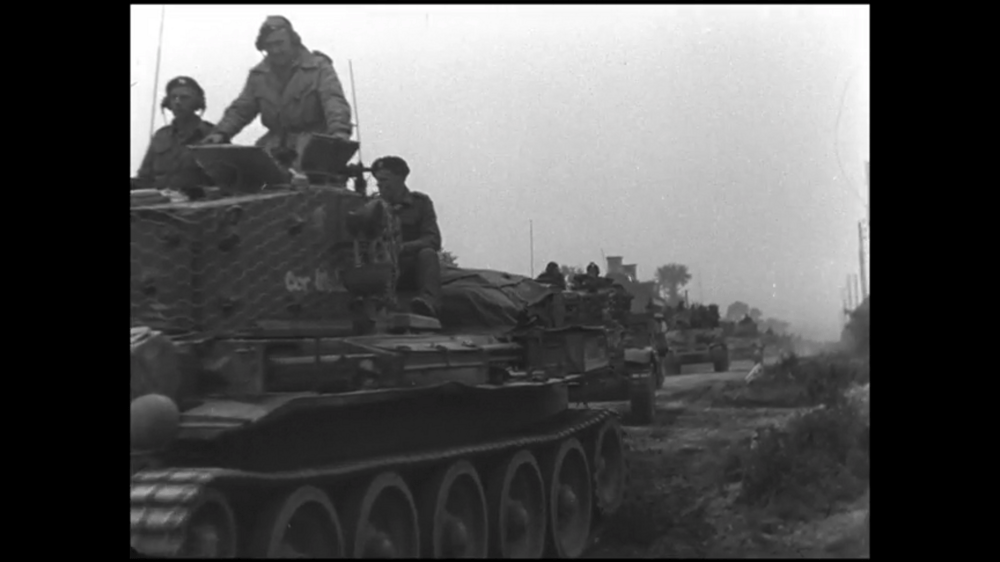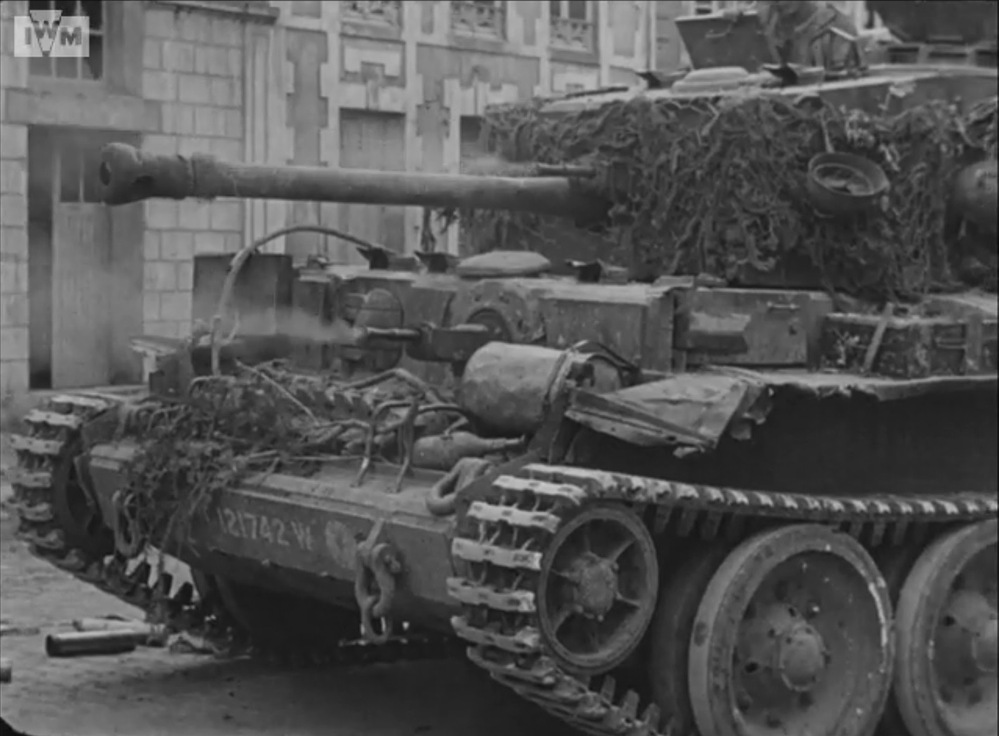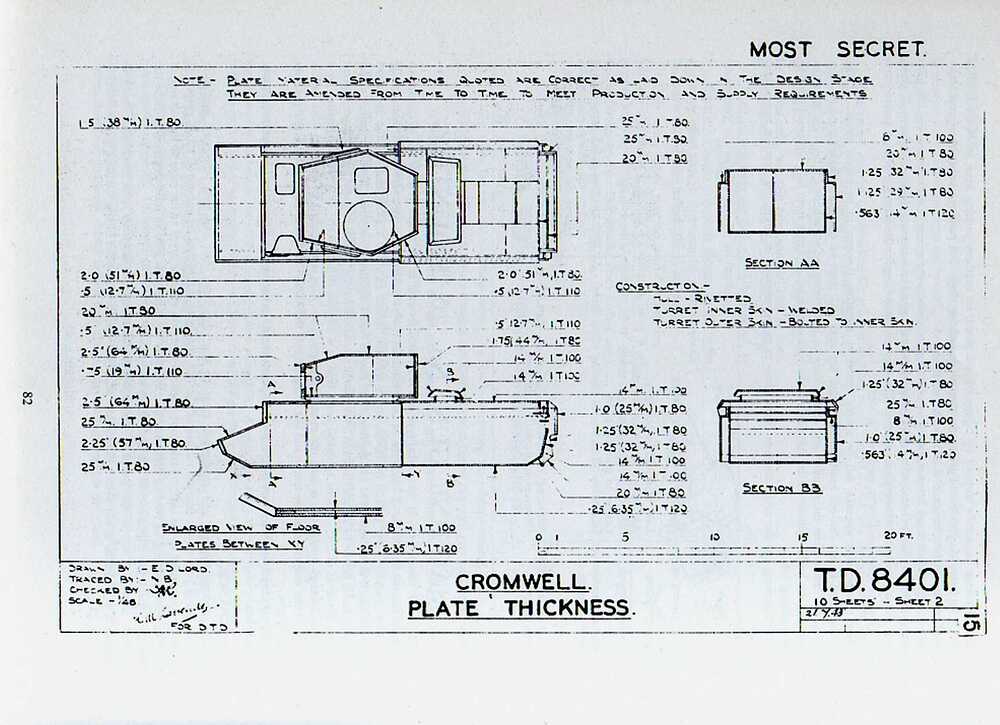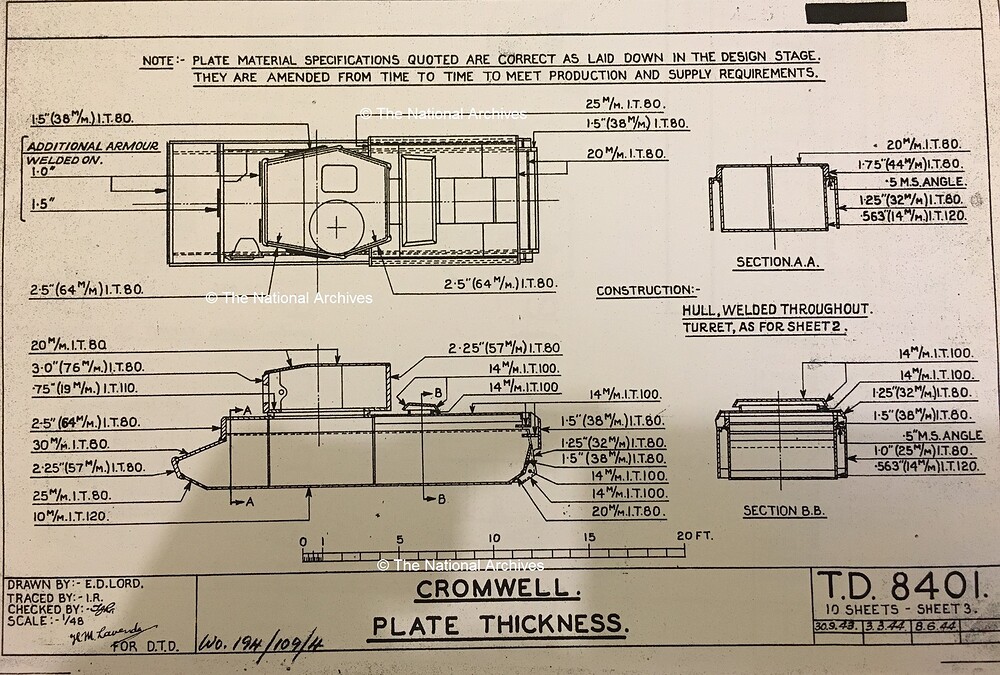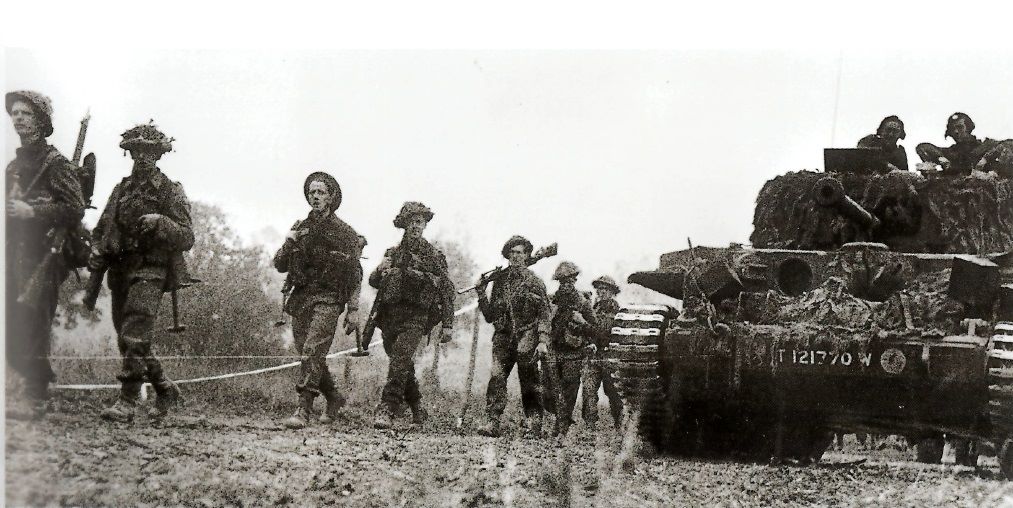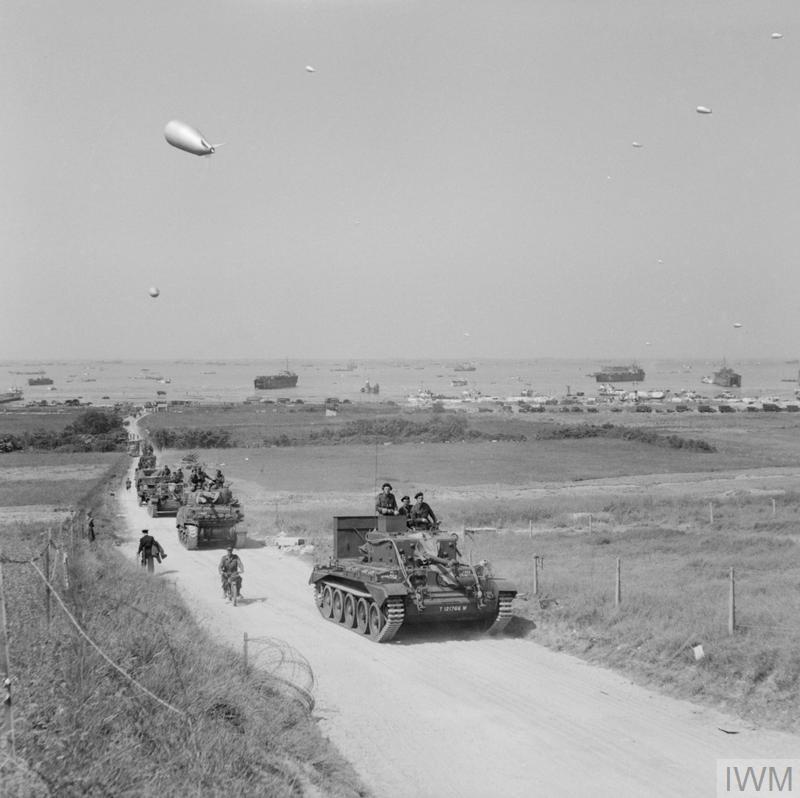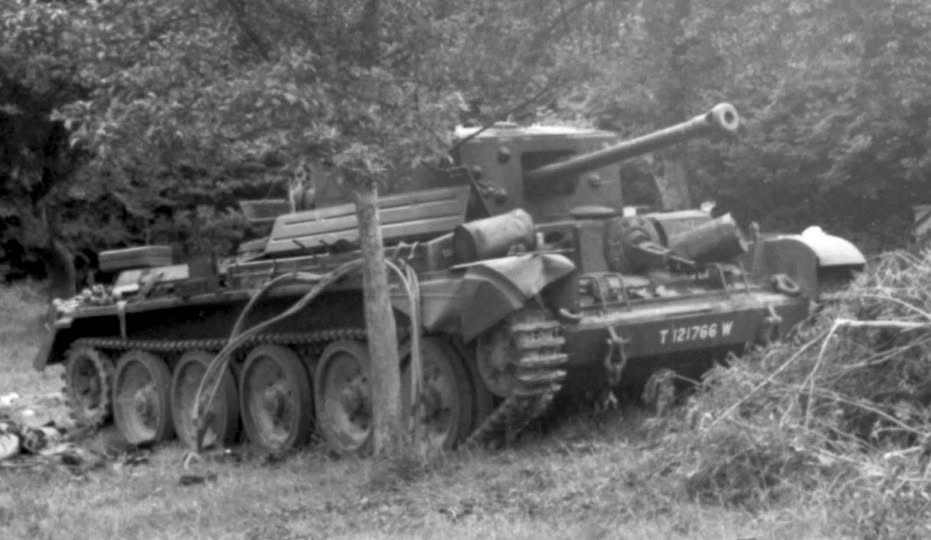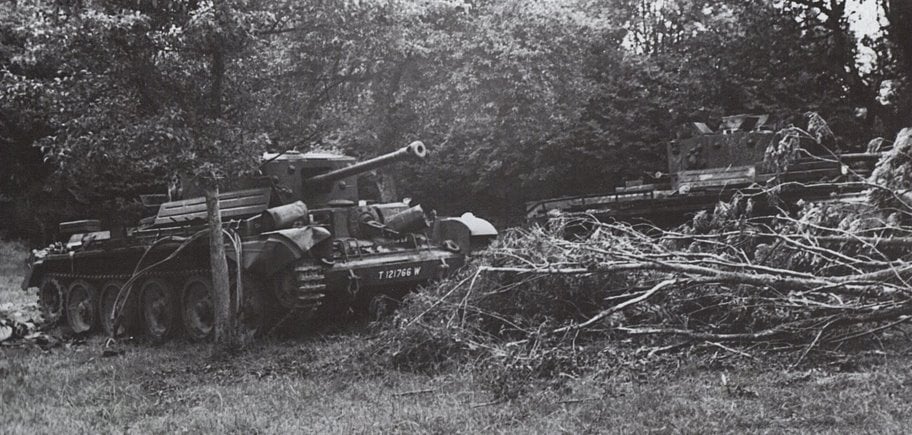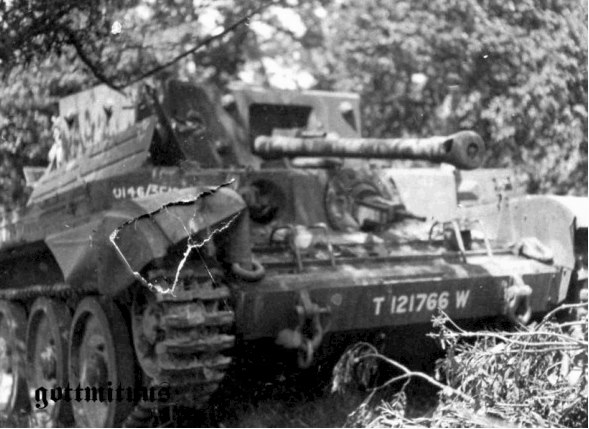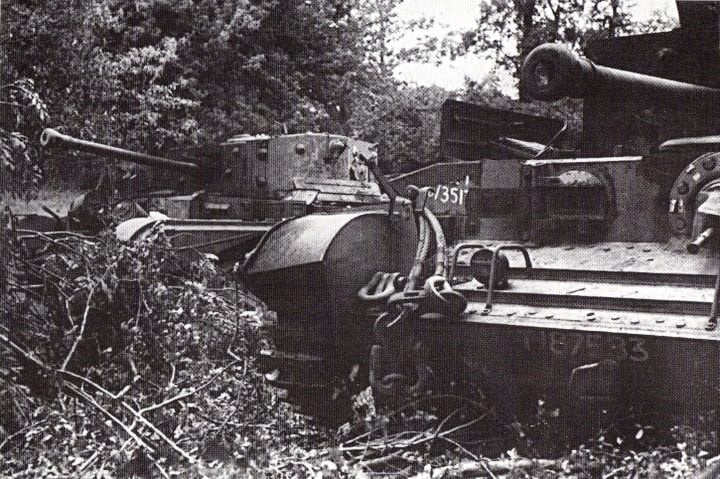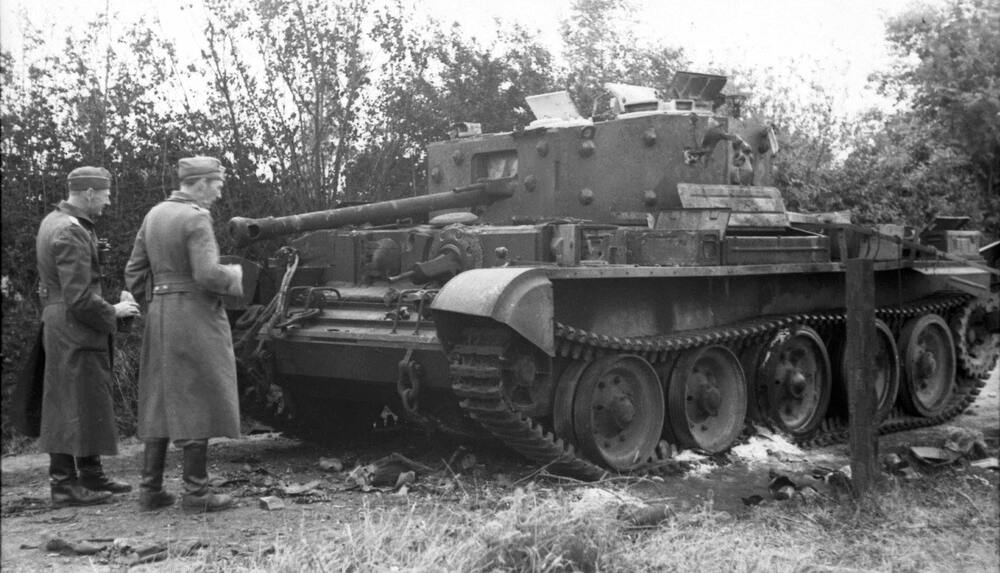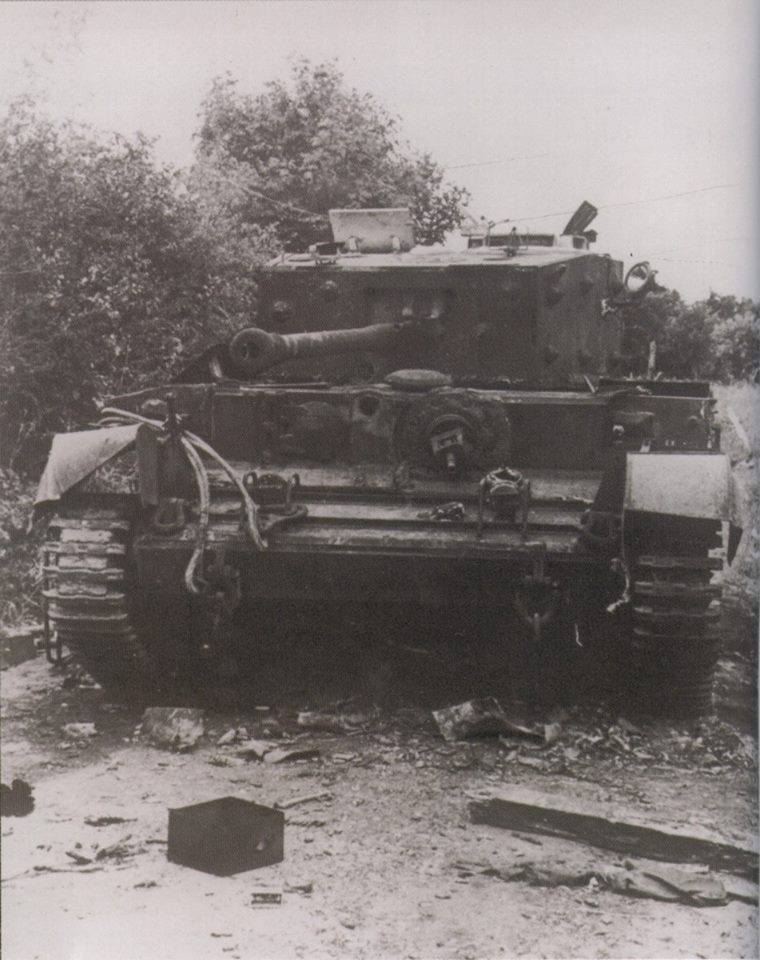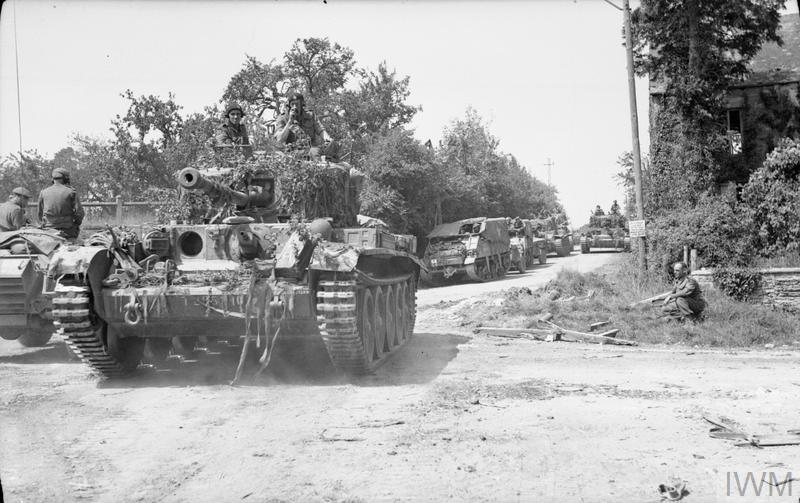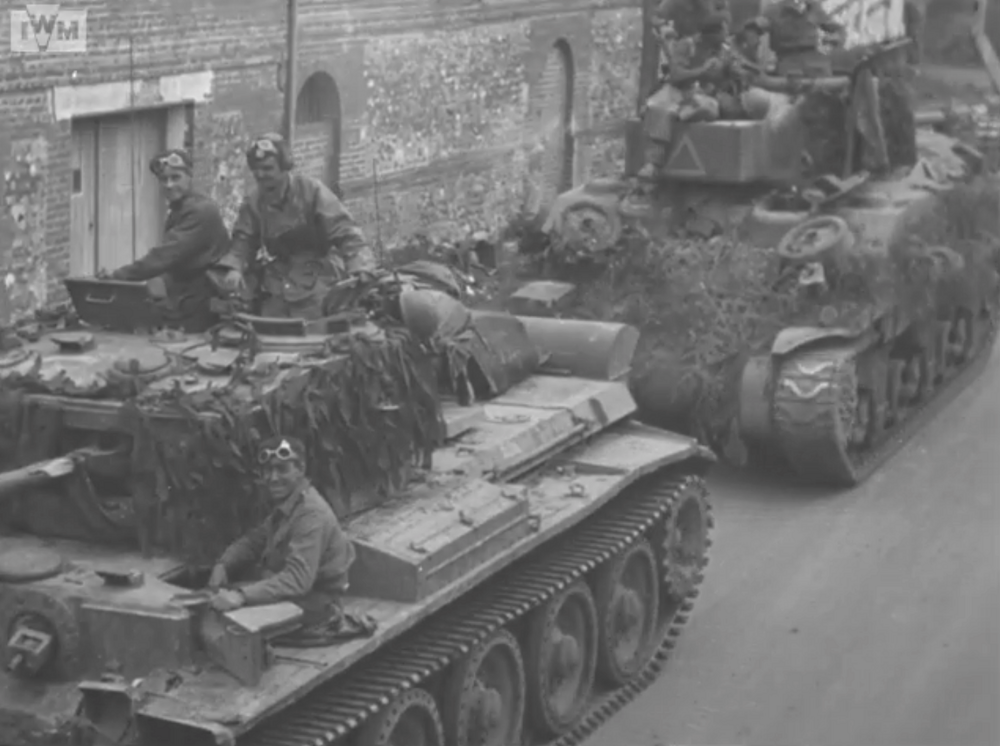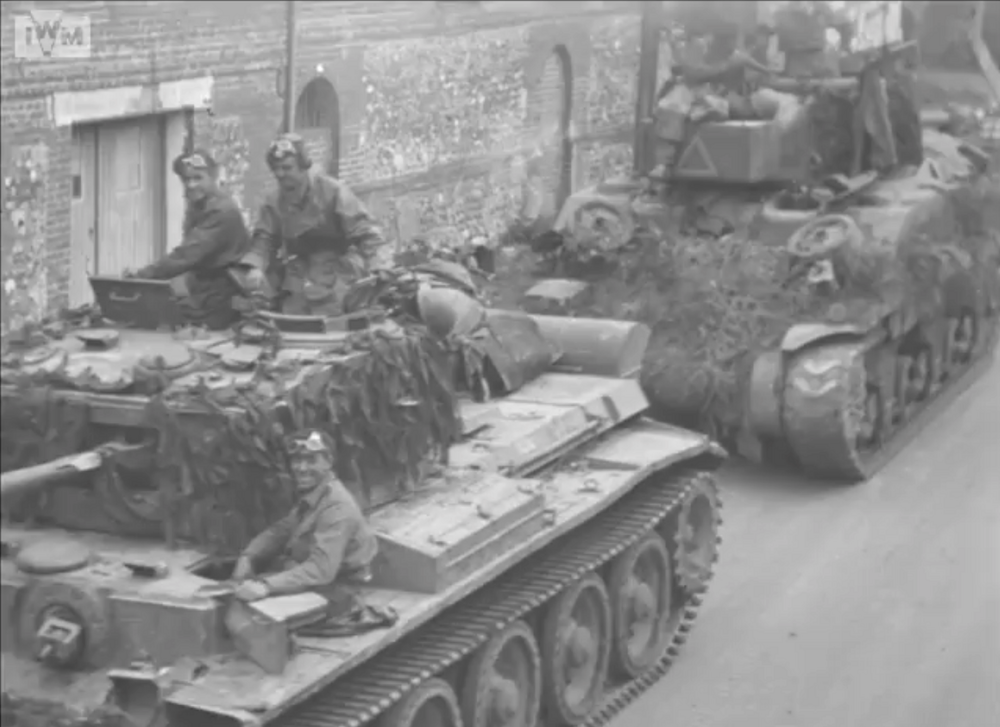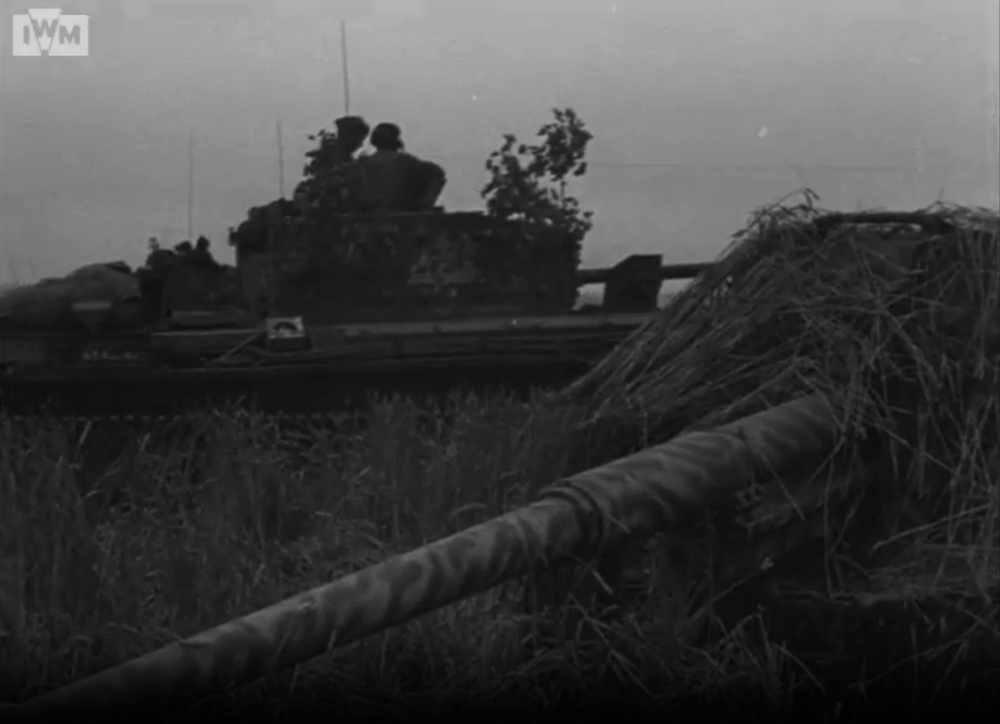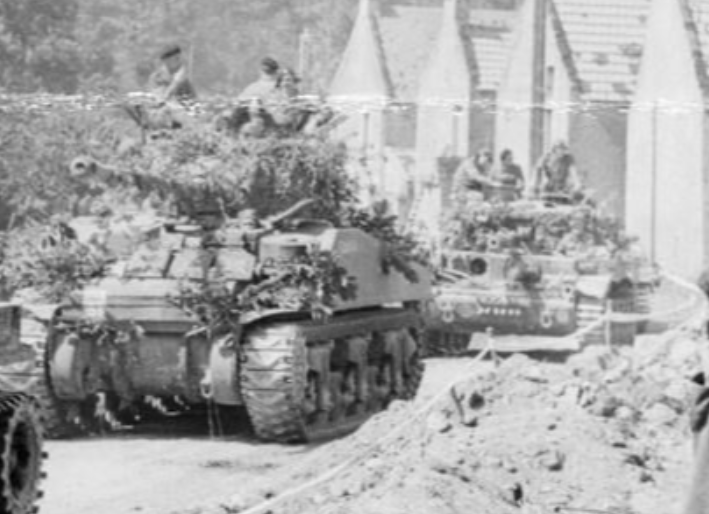- Yes
- No
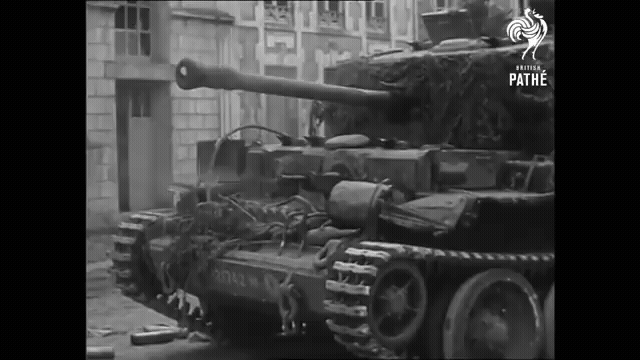
T121742W ‘Slaphappy’ commanded by Lt. G. Boak, Troop Leader of 3rd Troop, C Squadron, 1st RTR, 7th Armoured Division letting off both BESAs for the camera.
History
Constructing tanks using riveting required building a sub-frame onto which the armour then had to be riveted which in turn increased the overall weight and reduced the maximum possible armour thicknesses without overloading the running gear and drivetrain. It also increased the production time and made waterproofing the tanks for deep wading a much more time consuming process.
Welding, on the other hand, negated all of these problems and a welded version of the Cromwell had been proposed very early on in its life-cycle. The first welded one, known as ‘Pilot D’, was built by Birmingham Railway Carriage & Wagon Company Ltd. It had a welded turret reminiscent of the Churchill III’s, wider 15.5-inch tracks, and large canister spring suspension allowing the weight limit to be increased to 28 tons. Difficulty with welding the double front plates meant that the next two vehicles built had single thickness front plates as well as a new single-piece driver’s hatch taken from the A33. These two hulls were sent to Vauxhall Motors.
Pilot D was later fitted with applique plates and testing showed that the armour could withstand hits from a 6pdr fairly well while not having any significant negative effects on the tank’s overall performance.
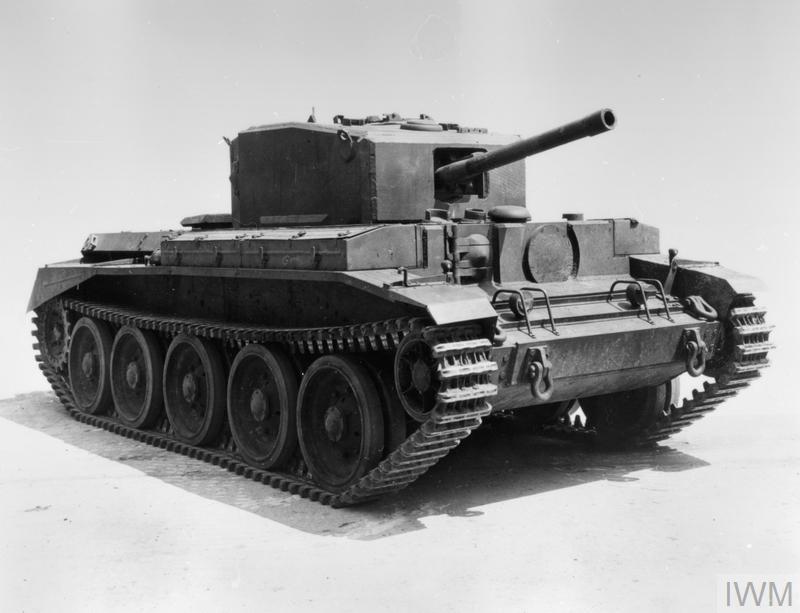
Two different proposed versions stemmed from this but neither were built and BRCW instead modified their Vauxhall hull with Pilot D’s style of applique armour but retained the dual-layer, bolted turret design as used on the normal Cromwells. All 123 (split between Mk. Vw and Mk. VIIw) of their welded Cromwells followed this basic formula.
As such, the Cromwell Mk. Vw was built with 14-inch tracks, large canister spring suspension, the single piece A33-style driver’s hatch (which incorporated one of his periscopes), and, most importantly, 1-inch (25.4mm) applique plates on the lower hull nose and turret front, and 1.5-inch (38.1mm) plates on the upper hull. Most, if not all, also had the All-Round Vision cupola for the commander.
Unlike the Mk. V, Mk. Vws were built on either the Type D or Type E hull. To quickly clear any confusion, the tanks were known as Mk. VwD or Mk. VwE but the welded versions of the two hulls were individually known as Dw and Ew.
Aside from the previously mentioned features of the welded tanks, the welded hulls were effectively the same as their riveted forebears but the Dw replaced the dual-layer floor with a single 10mm piece while the Ew had low-speed final drives and a single 14mm thick floor. Visually differentiating the Dw and Ew is virtually impossible and so determining a tank’s hull type relies on the War Department number and builder’s plate. As such the photos included here could be of either hull type.
These tanks had the suffix ‘W’ at the end of their War Department numbers to signify their welded construction and were in the range of T121701-121822 except for the single VwE built by English Electric which was T255310.
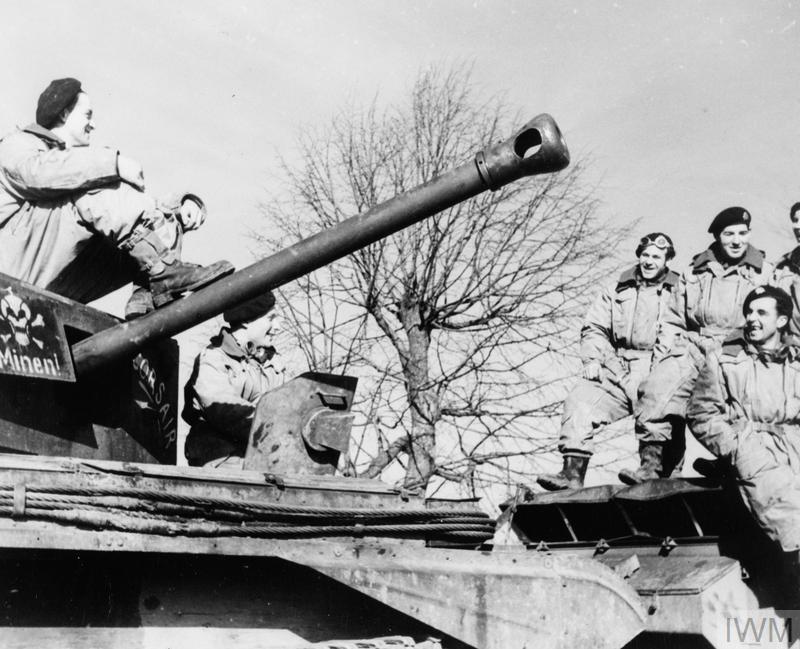
Czech Cromwell tank crews of the 1st (Czech) Independent Armoured Brigade during the siege of Dunkirk, spring 1945. The name ‘Corsair’ has been painted on the turret of the left-hand tank. - IWM (HU 99799)
In-service
With such a small number of Mk. Vws being built they don’t often appear in photographs or film even though they saw service from D-Day through to the end of the war. As the Armoured Regiments of 22nd Armoured Brigade (7th Armoured Division) and the Czechoslovak Independent Armoured Brigade were the only ones to fight ‘normally’* with Cromwells in their fighting Squadrons, they seem to have been the main recipients of the welded tanks.
For example, research by Daniel Taylor shows that, as of May 1944, 1st Royal Tank Regiment had eight Mk. Vws with a few of them belonging to the Troop Leaders. These were:
- T121740W ‘Astrid’ - 3Tp, A Squadron
- T121742W ‘Slaphappy’ - 3Tp, C Squadron
- T121743W ‘Fuka Walal’ - 2Tp, C Squadron
- T121745W ‘Fair Maid o’ Perth’ - 2Tp, B Squadron
- T121746W ‘Andrea’ - 4Tp, A Squadron
- T121747W ‘Cor Wullie’ - 1Tp, B Squadron
- T121748W - 1Tp, C Squadron
- T121750W ‘Lady Godiva’ - 2Tp, B Squadron
*11th, Guards, and 1st Polish Armoured Divisions only had Cromwells in their Recce Regiments outside of Divisional HQ tanks. 8th KRIH, the Recce Regiment of 7th AD also had Cromwells.
Units serving with the 7th Armoured division follow up the German retreat beyond Aunay-sur-Odon. - IWM (A70 113-14) / T121747W ‘Cor Wullie’ - 1Tp, B Squadron, 1RTR
In-game
The reason I have chosen the Mk. VwD specifically is that, because it doesn’t have the low-speed final drives, it’s theoretically capable of the same 40mph top speed that the Mk. I and Mk. V can achieve which would allow it to keep the main selling point of the Cromwell over the slower VwE. This, combined with the applique plates, mean it’s just a straight upgrade over the 3.3 Mk. V.
Because of the extra armour, it would fit in at 3.7 giving players a good choice against the Mk. I of whether they value more armour, or a gun with better AP performance. It would probably be best if it were foldered with the other two Cromwells but placed after the Mk. I so that players aren’t forced to grind two 75mm tanks after the Crusaders before they can once again use a 6pdr.
Specifications
Crew - 5
Weight - In the range of 28.5 - 29t (guesstimate)
Length - 21’-4”
Width - 10’
Height - 7’-8”
Engine - Rolls-Royce Meteor 27L V12 (600hp)
Max speed - About 40mph (64 km/h)
Armament
OQF 75mm Mk. V - (Ammo: 64)
2x BESA 7.92mm MGs - (Ammo: 4950)
Max elevation/depression - +20/-12.5
Ammunition
Figures taken from War Thunder Wiki
Armor penetration (mm) at a distance:
10m / 100m / 500m / 1000m / 1500m / 2000m
M72 - AP: 91 / 88 / 78 / 67 / 57 / 49
M61 - APCBC: 103 / 100 / 89 / 77 / 66 / 57
M48 - HE
M89 - Smoke
Armour
Hull Front - 64mm
Upper Hull Nose - 30mm
Lower Hull Nose - 57mm
Hull Sides Upper - 44mm
Hull Sides Lower - 32mm+14mm
Hull Sides Rear Upper - 38mm+32mm
Hull Sides Rear Lower - 25.4mm+14mm
Hull Rear - 32-38mm
Hull Roof - 20mm
Engine Deck - 14mm
Turret Front - 64mm+12.7mm carbon manganese backing plate
Turret Sides - 51mm+12.7mm carbon manganese backing plate
Turret Rear - 44mm+12.7mm carbon manganese backing plate
Turret Roof - 20mm
Applique plates
Hull Front - 38.1mm
Lower Hull Nose - 25.4mm
Turret front - 25.4mm
Comparison of riveted and welded hull designs and plate thicknesses
Images
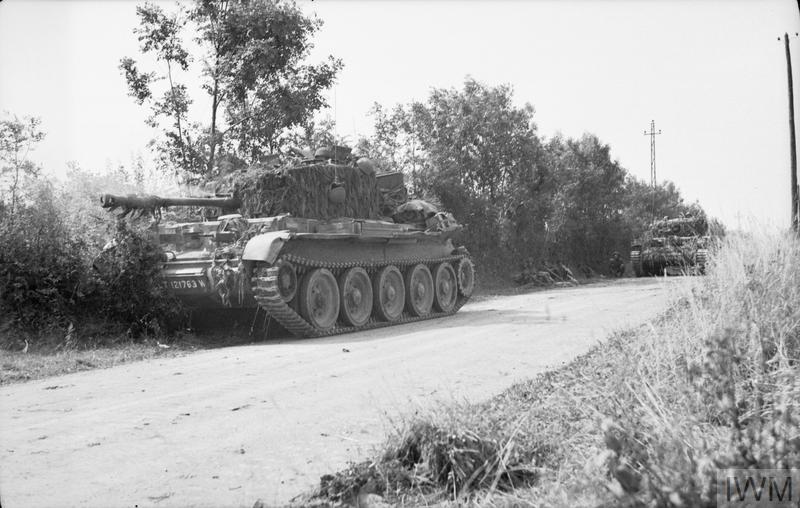
A Cromwell Mk V tank of 7th Armoured Division (probably 4CLY), firing on enemy positions with its co-axial BESA machine gun in support of infantry of 1/5th Queen’s Regiment during the advance towards Aunay-sur-Odon, Operation BLUECOAT, 31 July - 1 August 1944. - IWM (B 8378)

White-washed Cromwell tanks of 7th Armoured Division, 16 January 1945. - IWM (B 13706)
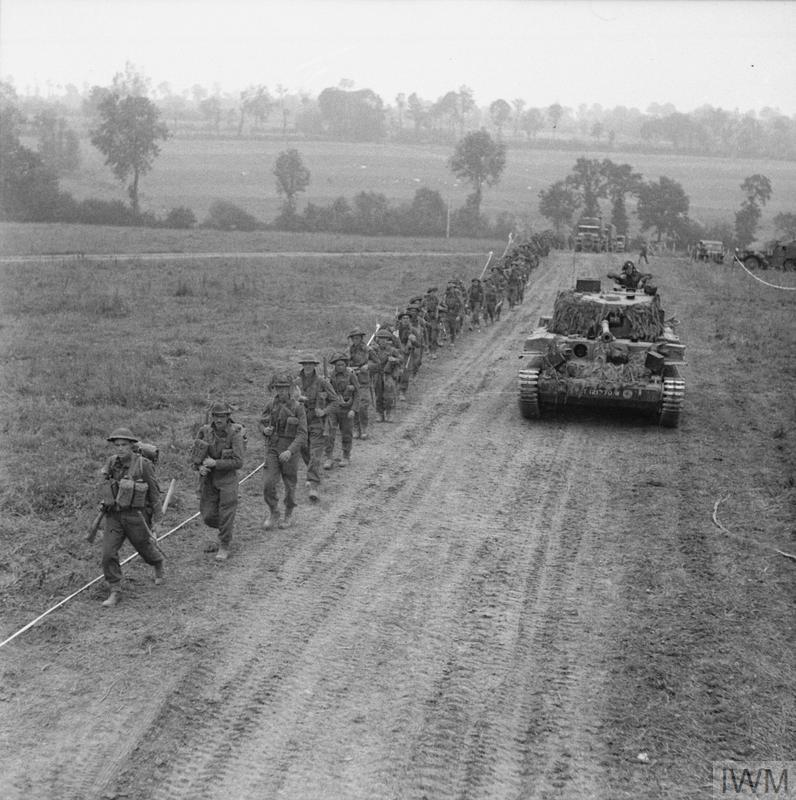
A Cromwell tank and infantry advance along a lane cleared of mines and marked with tape, near Le Beny Bocage, 1 August 1944. - IWM (B 8345)
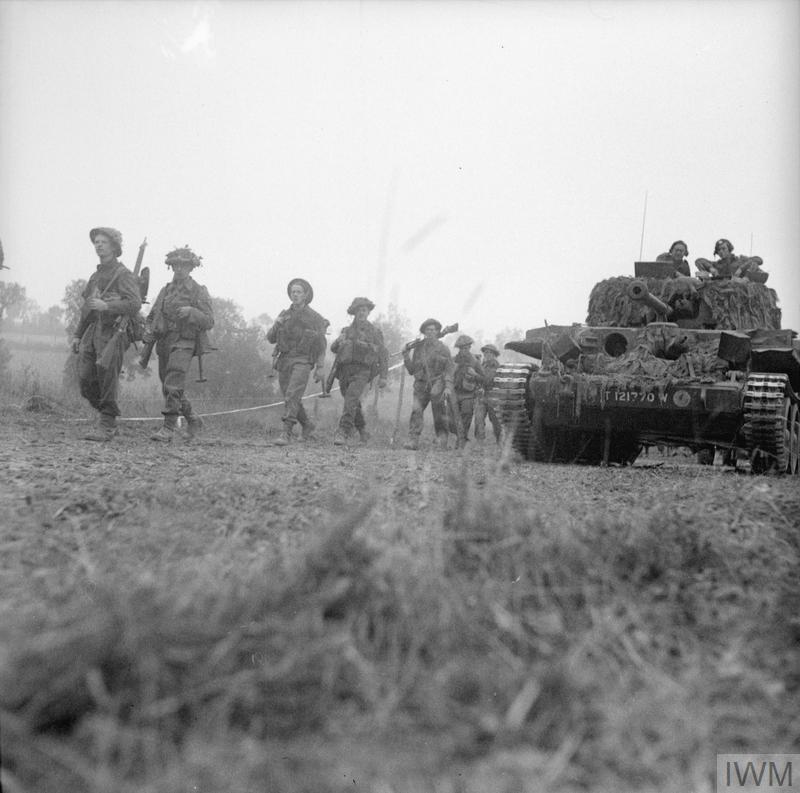
Infantry and tanks move forward near Le Beny Bocage. - IWM (B 8346)
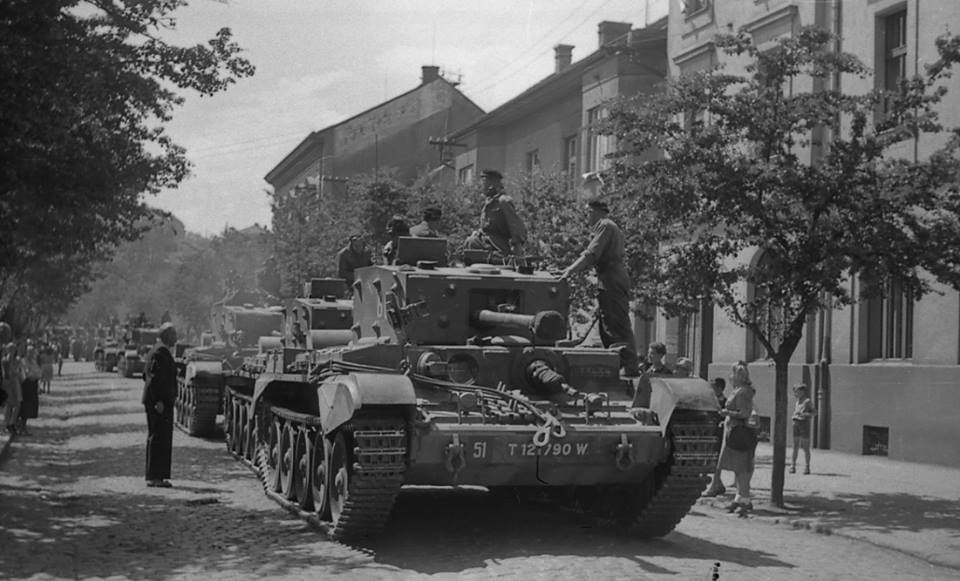
Welded Cromwells belonging to the Czechoslovak Independent Armoured Brigade. Aside from 7th Armoured Division, they were the only others to use Cromwells in their ordinary fighting Squadrons. T121790 and the third in line both appear to be Mk. VIIws as evidenced by their slightly wider 15.5-inch tracks. However, the tank between them is a Vw.
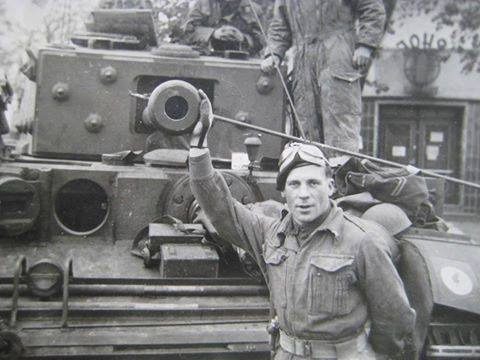
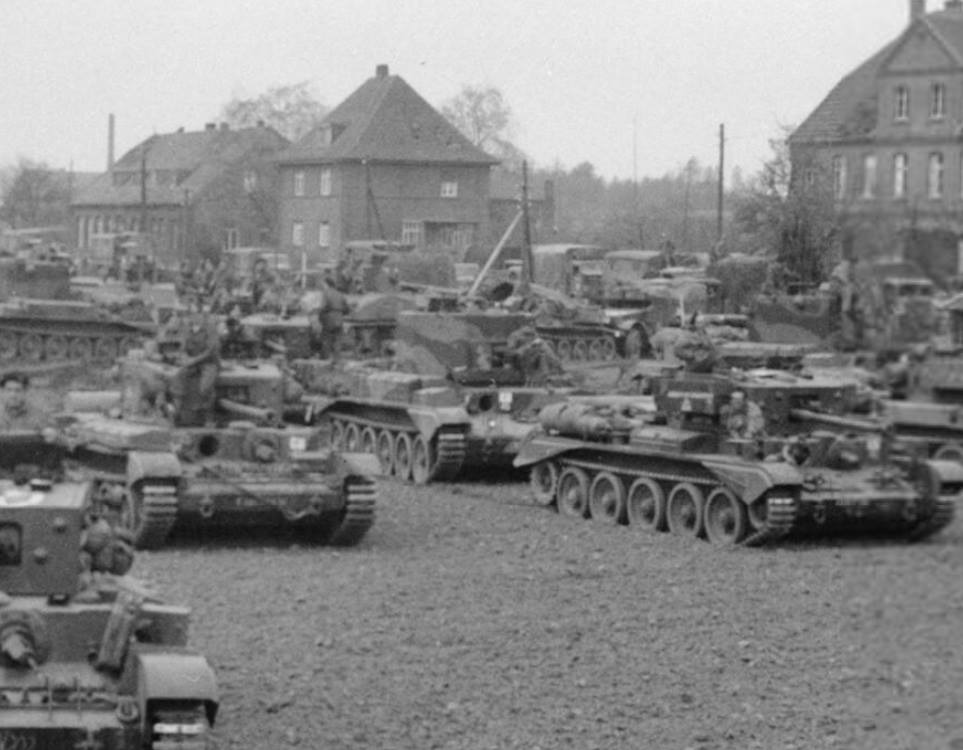
8th KRIH, 7th Armoured Division - IWM (BU 2729) - Welded hull left of the central Challenger
Sources
British Battle Tanks: British-Made Tanks of World War II - David Fletcher
Cromwell Tank: Vehicle History and Specification - David Fletcher
Cromwell and Centaur Tanks British Army and Royal Marines North-West Europe 1944-1945 - Dennis Oliver
https://www.youtube.com/watch?v=4wUWTjJq1so - Tank Chats #32 Cromwell | The Tank Museum
A27M Cruiser Mk.VIII Cromwell (1943)
Cromwell tank - Wikipedia
